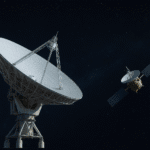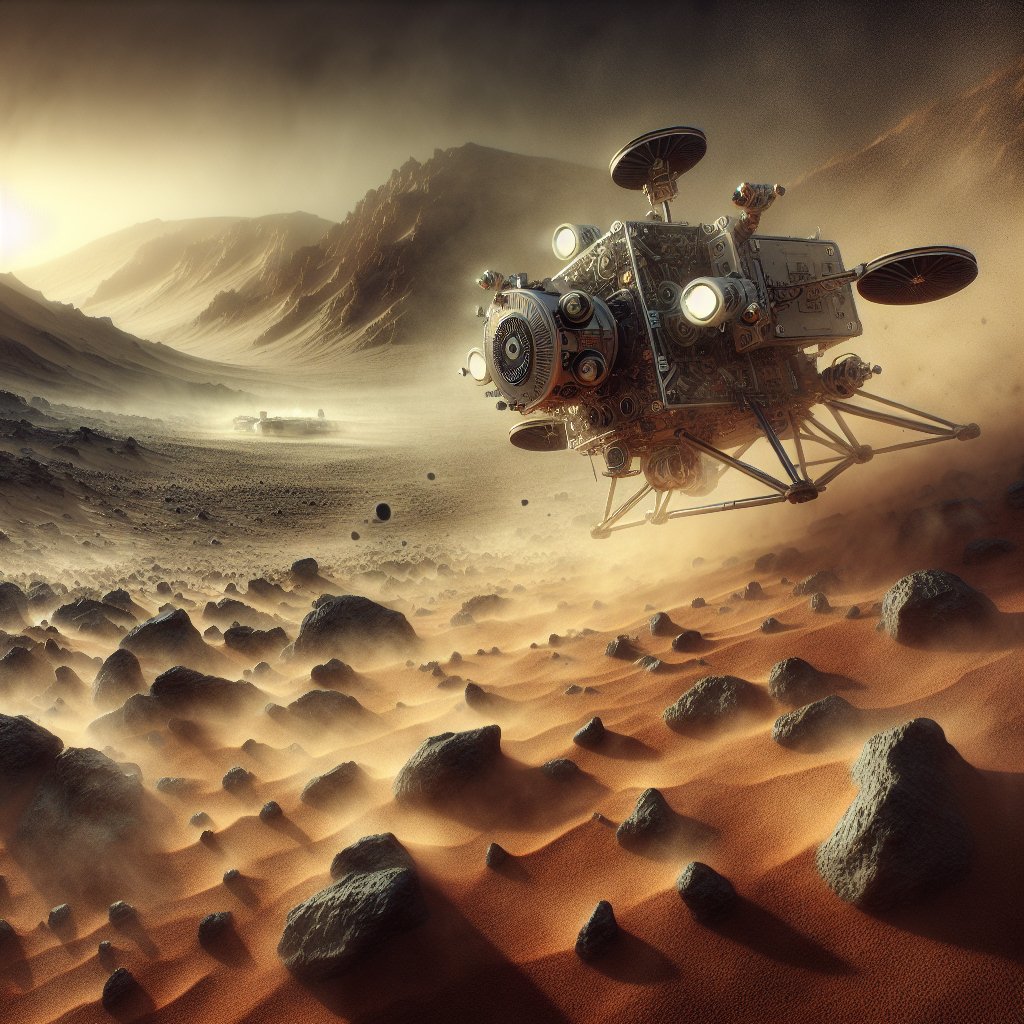Landing on Mars has long been one of the most formidable challenges in space exploration. The Red Planet, with its thin atmosphere and harsh surface conditions, presents a unique set of obstacles that have confounded scientists and engineers for decades. Despite numerous attempts, only a handful of missions have successfully landed on Mars, highlighting the complexity and difficulty of this endeavor.
The Martian Atmosphere: A Double-Edged Sword
One of the primary challenges of landing on Mars is its atmosphere, which is both a help and a hindrance. Unlike the Moon, which has no atmosphere, Mars has a thin atmosphere composed mostly of carbon dioxide. This atmosphere is dense enough to cause significant heating during entry, but too thin to provide much aerodynamic drag to slow down a spacecraft.
During the entry phase, a spacecraft can reach speeds of up to 20,000 kilometers per hour. At these speeds, the friction with the Martian atmosphere generates intense heat, requiring robust heat shields to protect the spacecraft. However, the thin atmosphere means that parachutes, which are effective on Earth, are less effective on Mars. Engineers must design parachutes that can deploy at supersonic speeds and still provide enough drag to slow the spacecraft down.
Moreover, the variability in atmospheric density due to dust storms and seasonal changes adds another layer of complexity. These variations can affect the descent trajectory and landing accuracy, making it difficult to predict the exact landing site. As a result, landing systems must be highly adaptable and capable of making real-time adjustments to ensure a safe touchdown.
Precision Landing: Hitting the Bullseye
Another significant challenge is achieving precision landing on Mars. Unlike Earth, where landing sites can be chosen with relative ease, Mars presents a rugged and unpredictable terrain. The planet’s surface is dotted with craters, cliffs, and boulders, any of which could spell disaster for a landing mission.
To address this, modern Mars missions employ advanced technologies such as terrain-relative navigation and hazard avoidance systems. These systems use cameras and sensors to map the landing area in real-time, allowing the spacecraft to identify and avoid potential hazards. However, these technologies require sophisticated algorithms and high processing power, adding to the complexity and cost of the mission.
Furthermore, the communication delay between Earth and Mars, which can be up to 24 minutes, means that real-time control from mission control is impossible. The spacecraft must be capable of autonomous decision-making during the critical landing phase, relying on pre-programmed instructions and onboard systems to ensure a successful landing.
Engineering Challenges: Building for the Unknown
Designing a spacecraft capable of landing on Mars involves overcoming numerous engineering challenges. The harsh Martian environment, with its extreme temperatures, dust storms, and radiation, requires robust and reliable systems. Every component, from the heat shield to the landing gear, must be meticulously tested and validated to withstand the rigors of the journey and the landing.
One of the most critical components is the Entry, Descent, and Landing (EDL) system, which must work flawlessly to ensure a safe landing. This system typically involves a combination of heat shields, parachutes, retro-rockets, and airbags or landing legs. Each element must be carefully designed and integrated to work in harmony, with no room for error.
Additionally, the limited payload capacity of current launch vehicles means that every gram counts. Engineers must balance the need for robust systems with the constraints of weight and volume, often requiring innovative solutions and materials to achieve the desired performance.
Scientific Goals: The Quest for Knowledge
Despite the challenges, the scientific rewards of landing on Mars are immense. The Red Planet holds clues to the early history of the solar system and the potential for past or present life. By studying its geology, climate, and atmosphere, scientists hope to gain insights into the processes that shaped Mars and, by extension, Earth.
Landing missions are equipped with a suite of scientific instruments designed to analyze the Martian environment. These instruments can conduct a range of experiments, from analyzing soil and rock samples to measuring atmospheric conditions. The data collected from these missions can help answer fundamental questions about the planet’s history and its potential habitability.
Moreover, successful landing missions pave the way for future exploration, including the possibility of human missions to Mars. By developing and refining the technologies needed for landing, scientists and engineers are laying the groundwork for the next era of space exploration.
Conclusion: The Path Forward
Landing on Mars remains one of the most challenging feats in space exploration. The combination of a thin atmosphere, rugged terrain, and harsh environmental conditions presents a formidable set of obstacles that require innovative solutions and cutting-edge technology. Despite these challenges, the pursuit of knowledge and the potential for groundbreaking discoveries continue to drive efforts to land on the Red Planet.
As technology advances and our understanding of Mars improves, the prospects for successful landings will increase. Each mission builds on the lessons learned from previous attempts, bringing us closer to unlocking the mysteries of Mars and expanding our presence in the solar system. The journey to Mars is fraught with challenges, but the rewards are well worth the effort.










